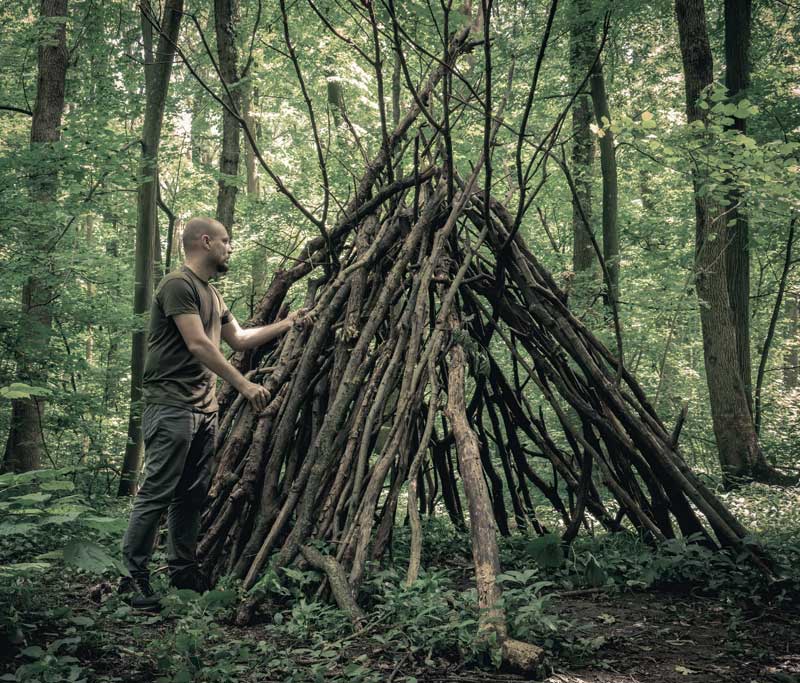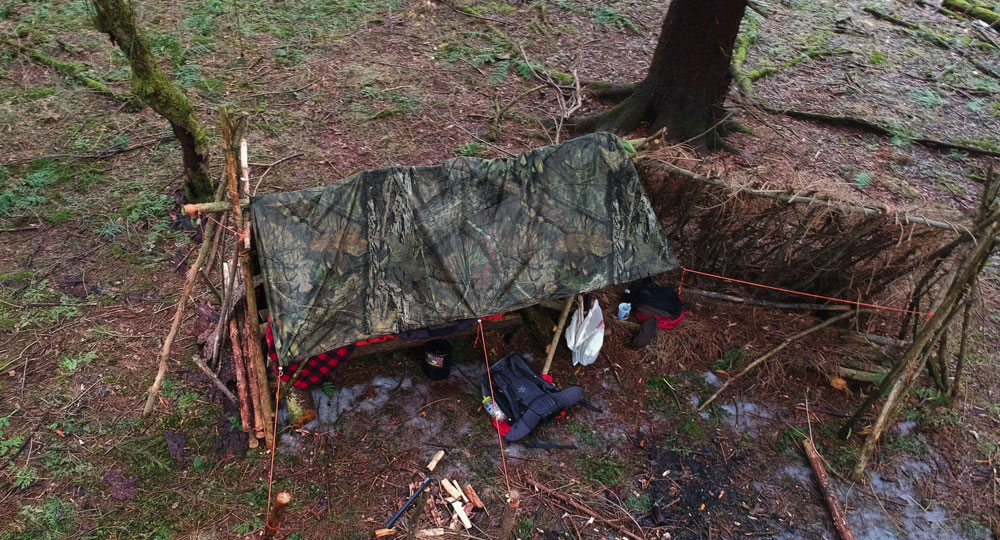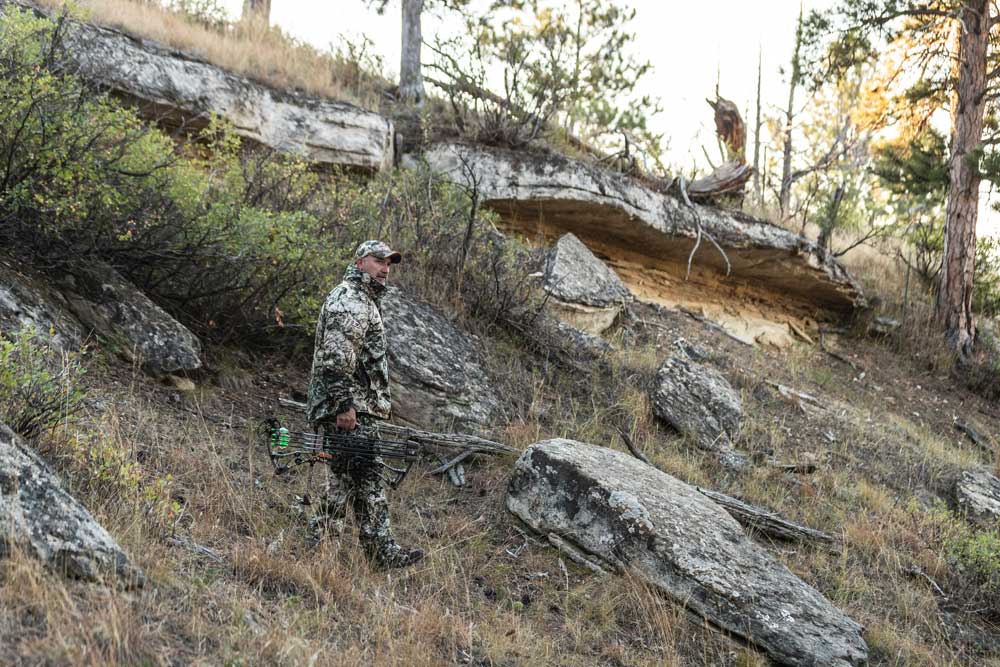Have you ever seen a contestant on a survival show build a shelter and thought “Do I have the survival skills to do that?” Contestants are dropped off in the jungle with just a backpack, some are left in the mountains with what’s in their pockets, and others are abandoned in a swamp naked. There are many things to consider when left to survive in the wilderness; the following strategies will help you build a survival shelter for any situation.

Location, Location, Location
Real estate agents and survivalists who are solo camping know that when deciding on the best place to build, it all comes down to location, location, location. You should be looking for a flat, dry and visible location. Try to avoid a slope; you don’t want to be downhill from any water runoff. Staying dry is a must when you’re in survival mode.
If you decide to use a place under a cliff or tree, make sure there are no dead limbs or loose rocks above you. Staying under the ledge of a cliff or cave can make it hard for search and rescue teams to see you from the air. With that said, if it’s freezing and the wind is howling, a cave and fire can keep you alive.
If you’re in a warm climate, look for a hilltop or another elevation to build your shelter. It can be easier for search parties to find, and any breeze will help keep away insects. If the temperature is dropping at night, you are better off closer to the top. Cold air settles to deep valleys and low-lying areas.
Construction Site
Once you have found the best location to build, it’s time to survey the area for construction material. Start with what you have on hand and see what’s in your backpack, pockets or purse. Everyday items like a pocket knife, a couple of feet of string or an emergency or raincoat can help you build a shelter.
Next, look for things around you that you can build a shelter with. A cave, deadfall tree or two trees six feet apart is a good place to start. You’re also looking for limbs for structure, enough leaves for an eight-inch-thick bed, pine limbs for a roof and vines to lash it down with. Once you have found your location and secured your building materials, it’s time to decide what type of survival shelter you can build.
Tarp Shelter

If you are lucky enough to have a tarp on hand, you have several shelter options to choose from. Use rope tied between two trees or a limb lashed between two trees to hold up the roof. You don’t want it too far off the ground or the shelter will be hard to keep warm.
Next, drape the tarp over and secure the sides. You can secure the sides with stakes you make from limbs or sit heavy rocks on the edges of the tarp. If you’re on a slope, scratch a moat around the tarp to prevent rain from coming under the tarp. It’s a good idea to toss dirt or pine straw around the edge of the tarp to keep the heat in and bugs out.
You can build a fire pit on one end for heat and, if it’s really cold, you can seal the opposite end with tree limbs and brush. Be sure to leave yourself room to get out around the fire pit if you do.
Fallen Tree Shelter
If you happen to find a fallen tree that still has limbs holding up the trunk, you can hollow out a spot by breaking off branches under the trunk. Break off enough branches to make a bed, but not enough to cause the trunk to fall. You can use the branches you break off to lean against the trunk and slow down the wind. Stacking more branches, limbs and pine branches against the trunk will help too.
Clear an area on the open end for a fire. You don’t want the fire too close to the opening, or you’ll risk catching the dead tree on fire. This structure is often longer than it is wide. Use the end opposite the fire to keep firewood for the night. Then you won’t have to get out of your structure to put wood on the fire when it’s dark.

The Lean-to
The lean-to needs a couple trees four or five feet apart. Once you find suitable trees, then lash a limb between them for the top support. If it is really hot, you may need just enough shelter to keep the rain off, so lash the top support a little higher off the ground. If it’s cold, you should lash the top support lower to keep heat in.
Next, lean larger limbs at a 45-degree angle against the top support. Stomp down the bottom of the larger limbs to keep them from sliding off in the wind. If you have string or vines to lash the larger poles to the support pole, it will make the structure solid. After the top support and larger limbs are done, lean smaller limbs, brush and leaves against the larger limbs. The lean-to is a great survival shelter when you don’t have much time.
Shelter In Place
You now know what is going through the contestants’ minds after they are left to build a survival structure. They are trying to choose a good location, find construction material and build a dry, warm structure. With this knowledge, you are ready to be dropped off in the jungle, left in the mountains or abandoned in the jungle. Hopefully, you won’t be naked.
Mossy Oak Wellness products are designed with that singular goal - to help you get the most from your time outdoors. Our passion for helping people get closer to nature has led us to develop innovative, new products built to not only motivate and inspire you to pursue your best life outdoors but to help you feel better while you’re out there.




























